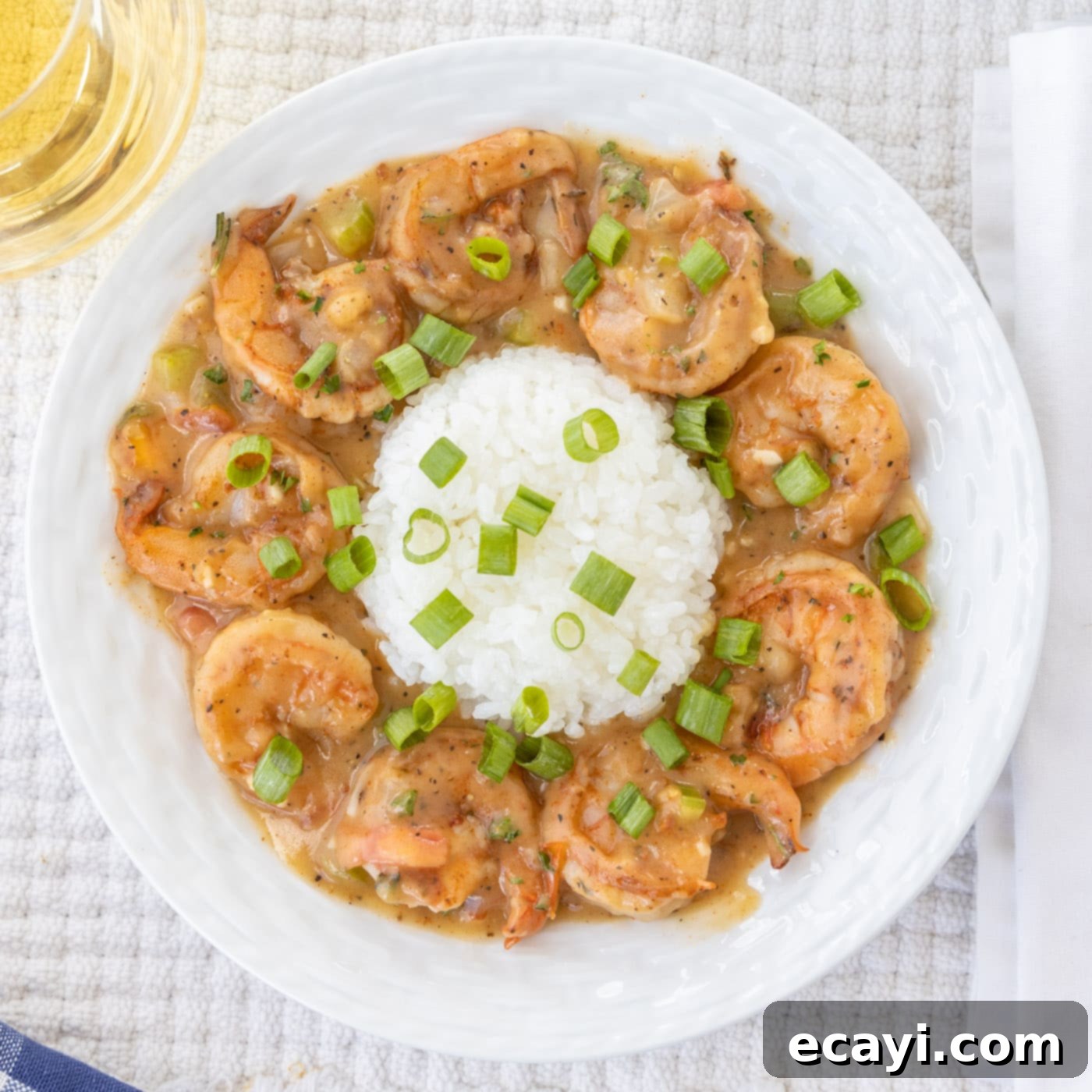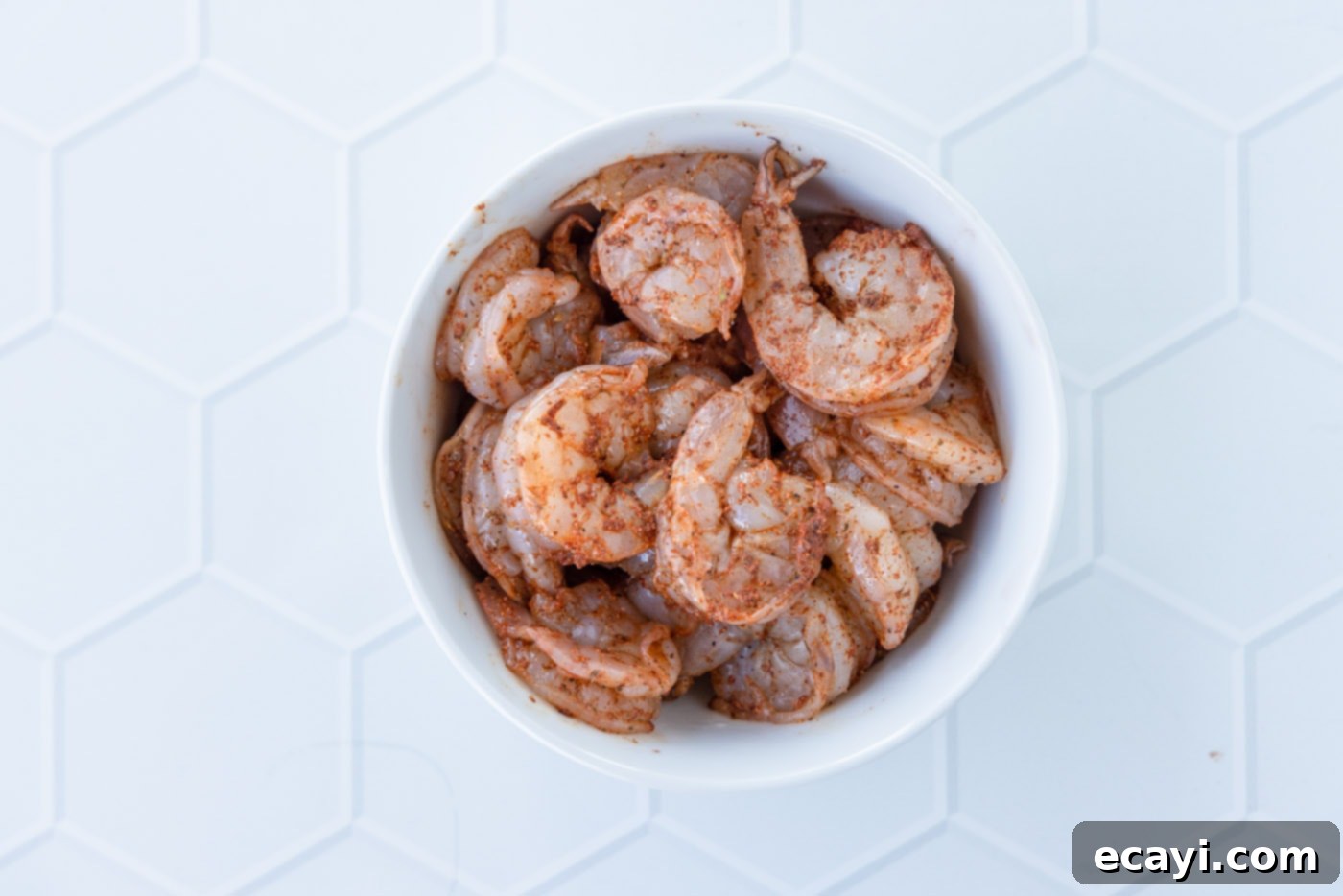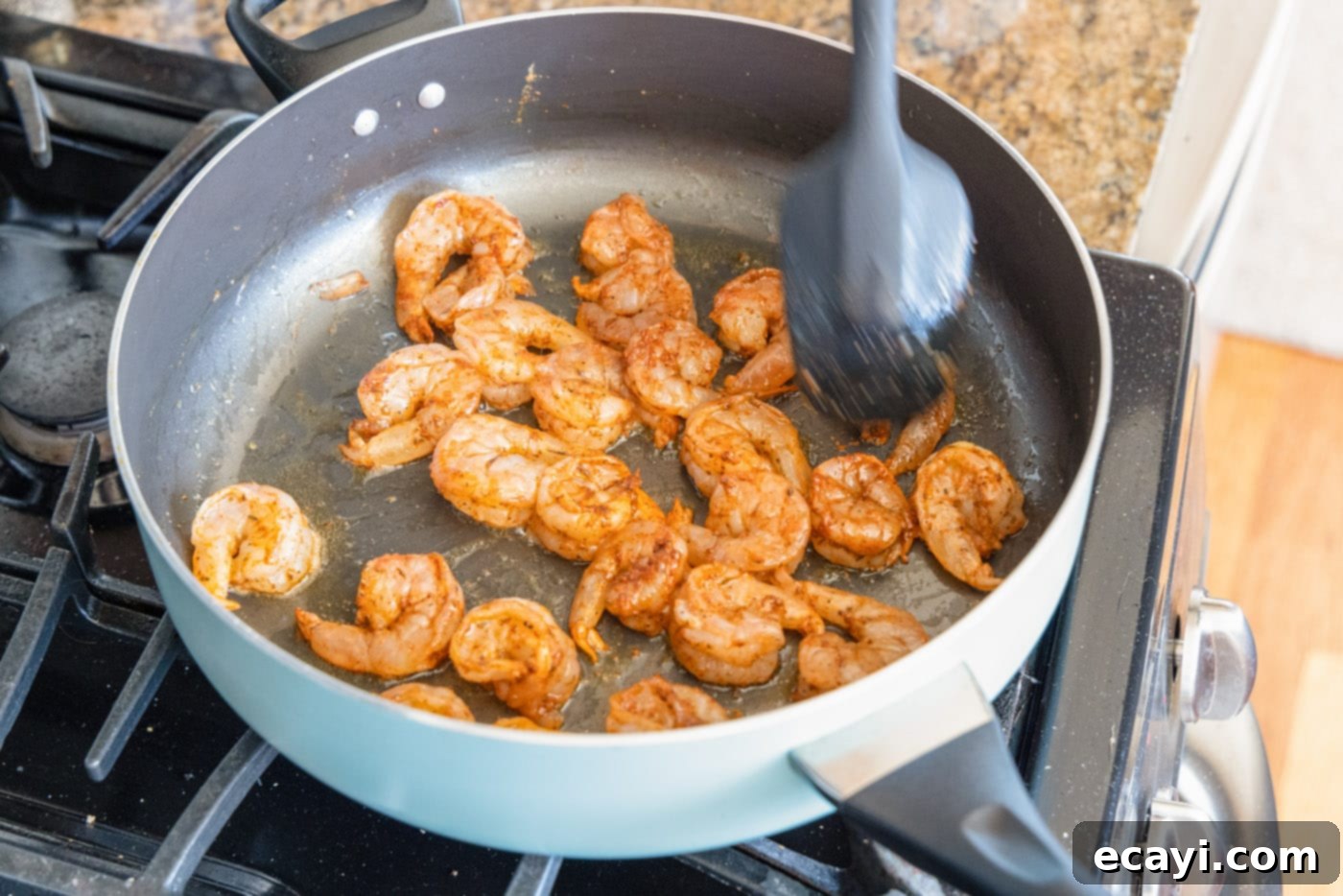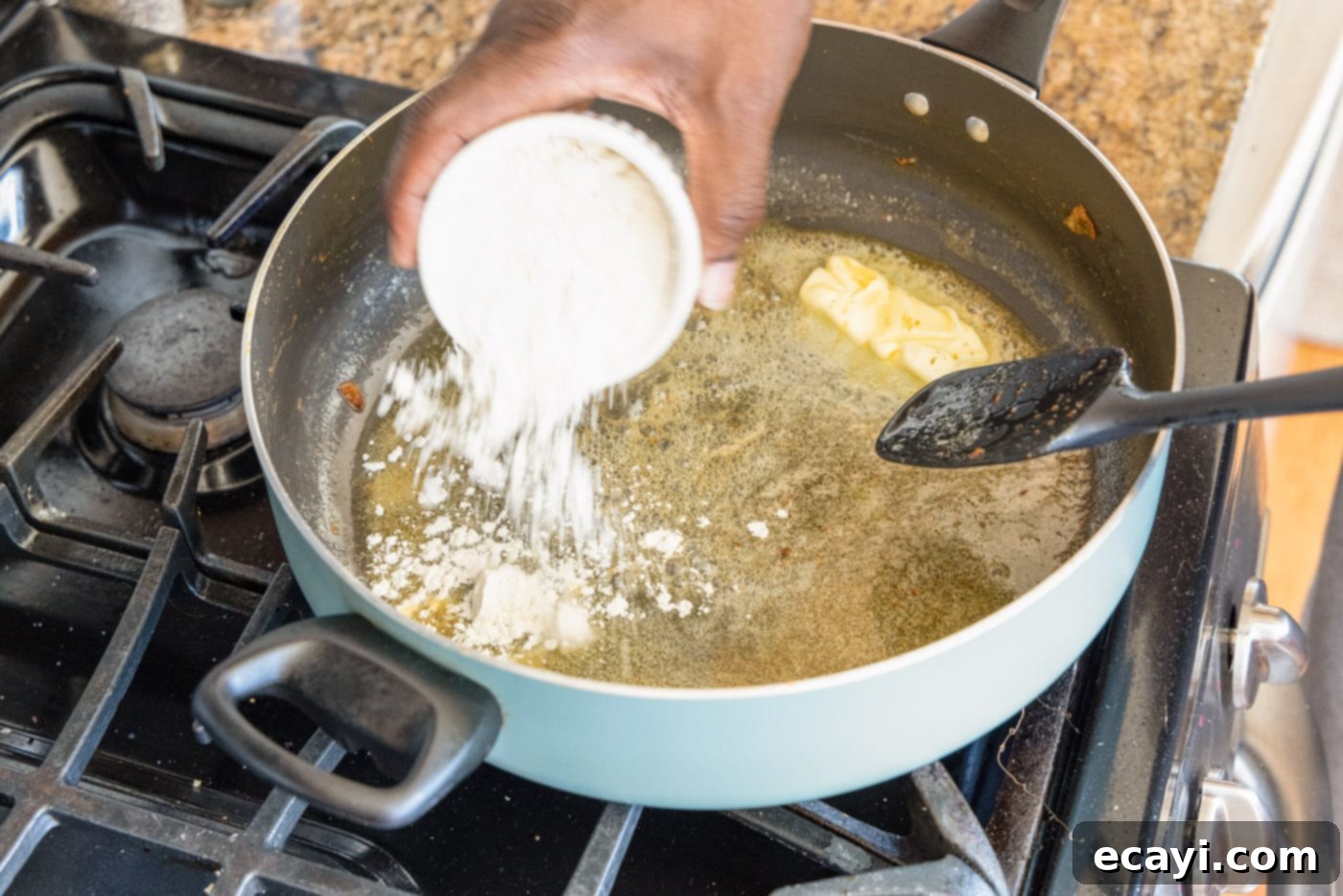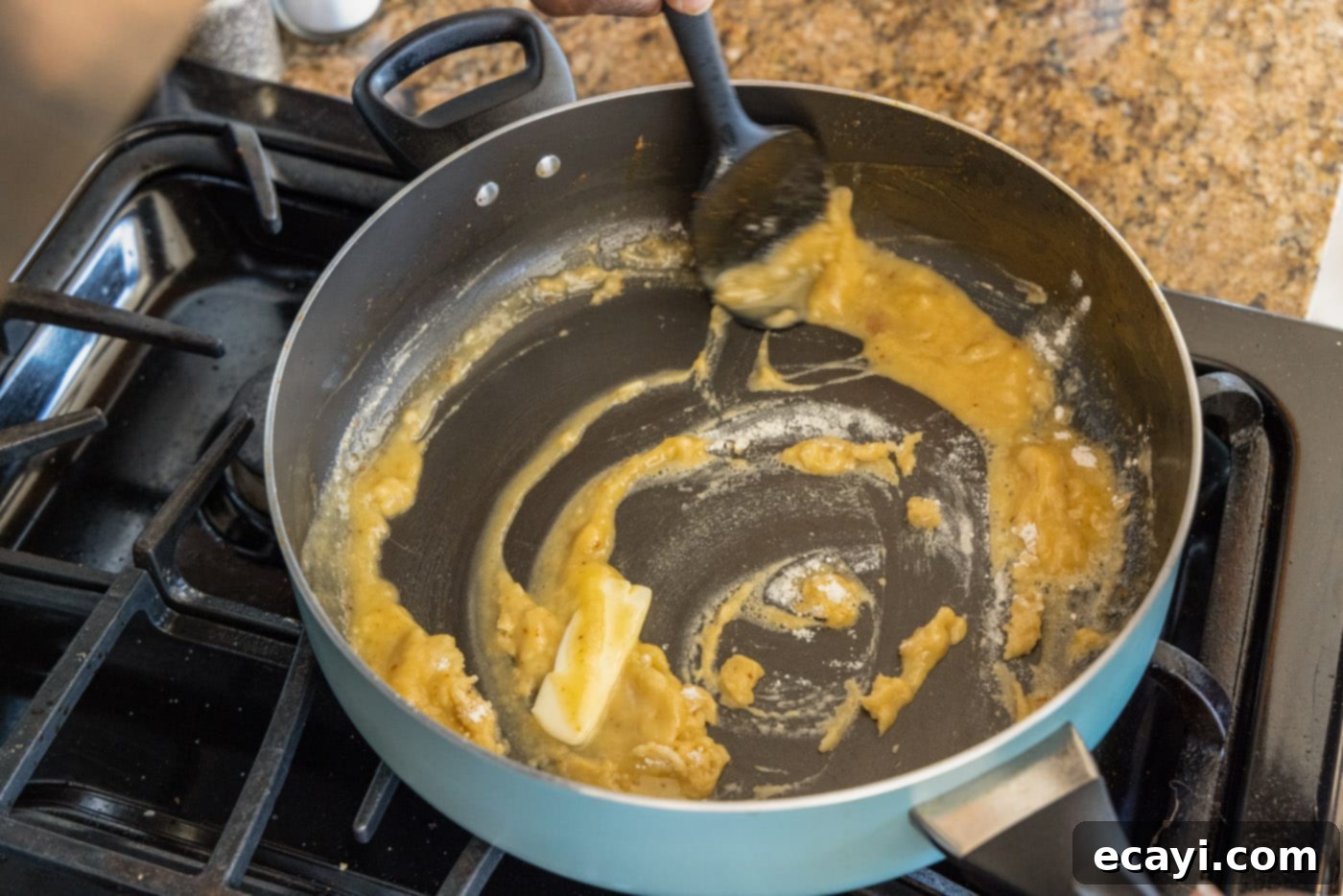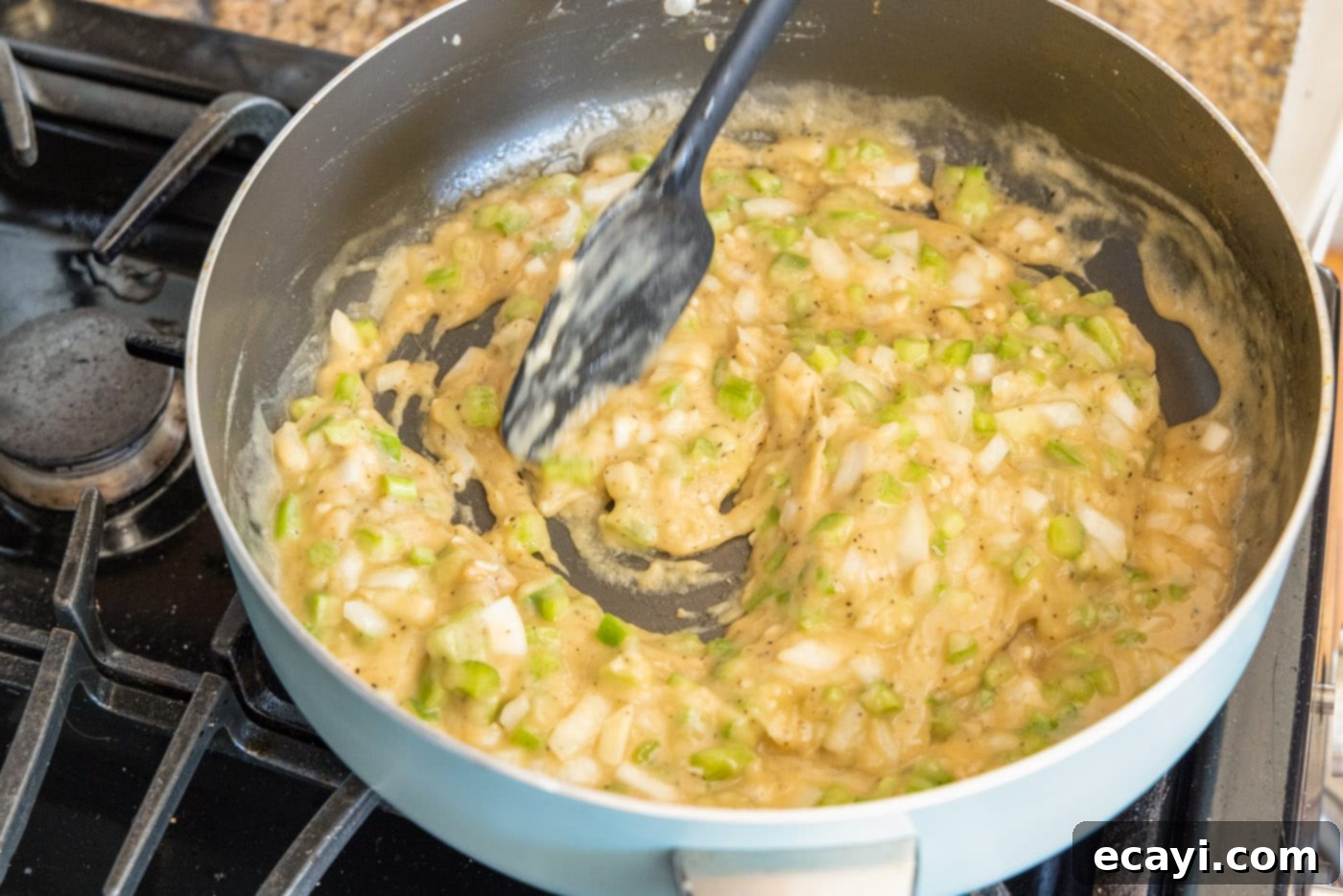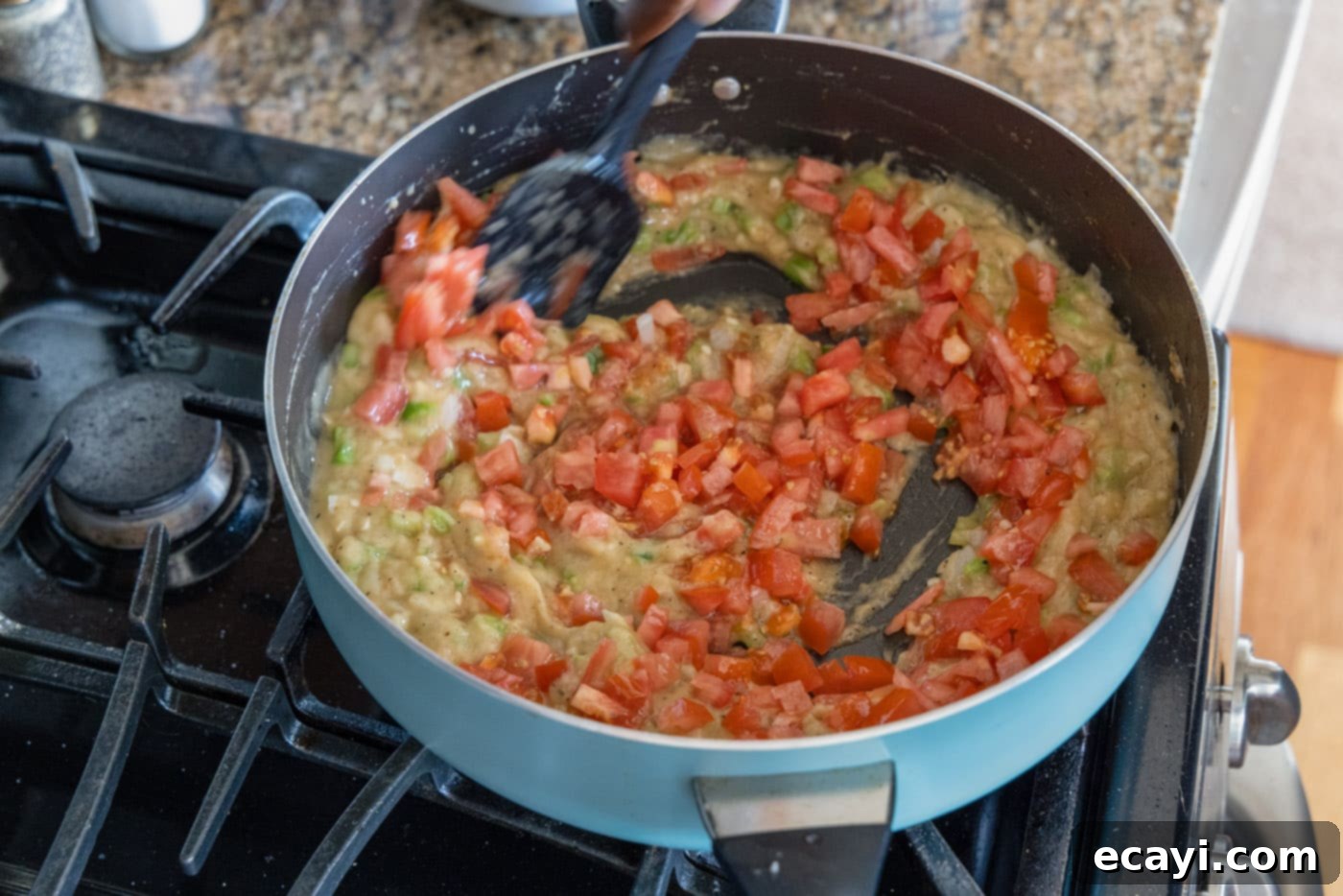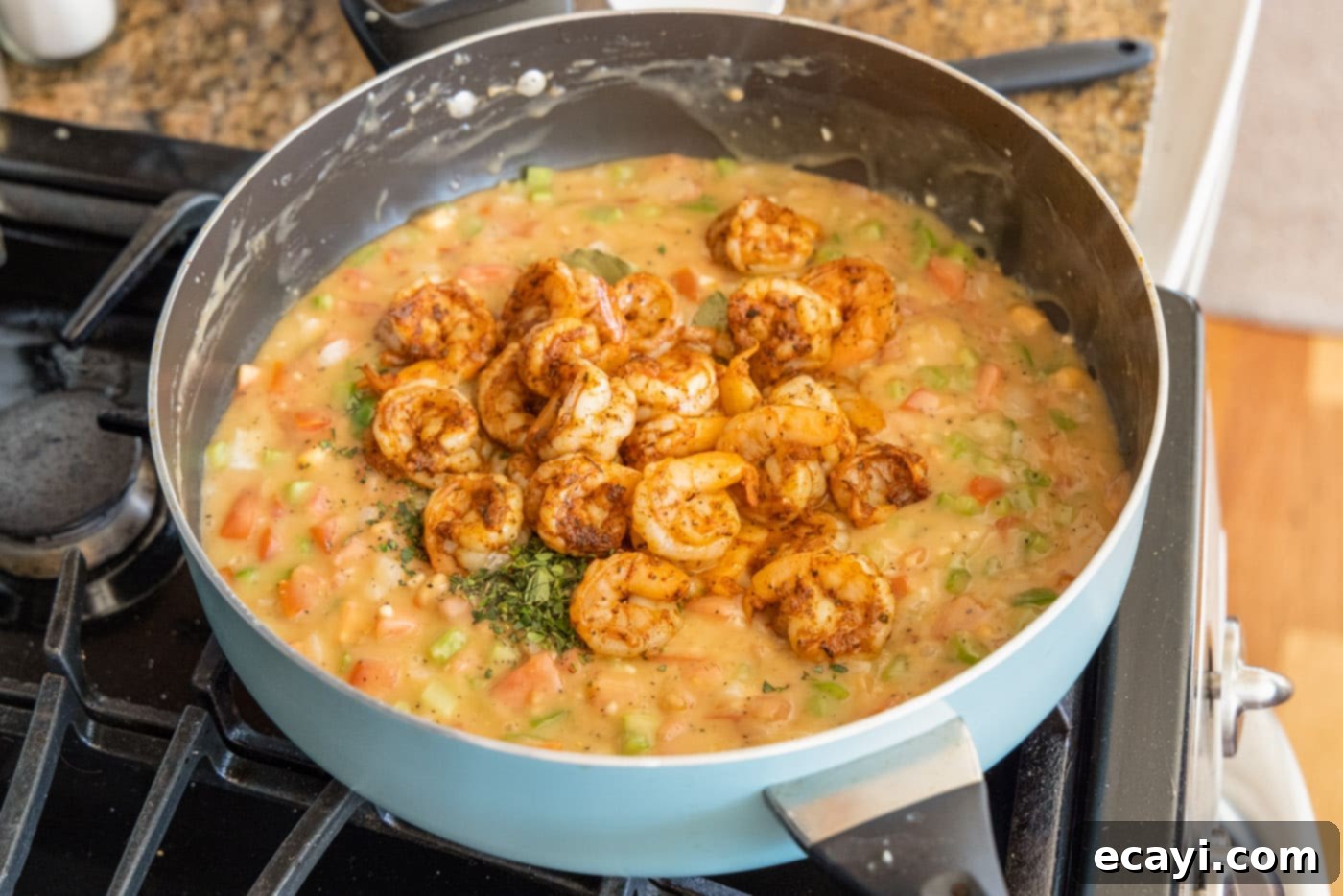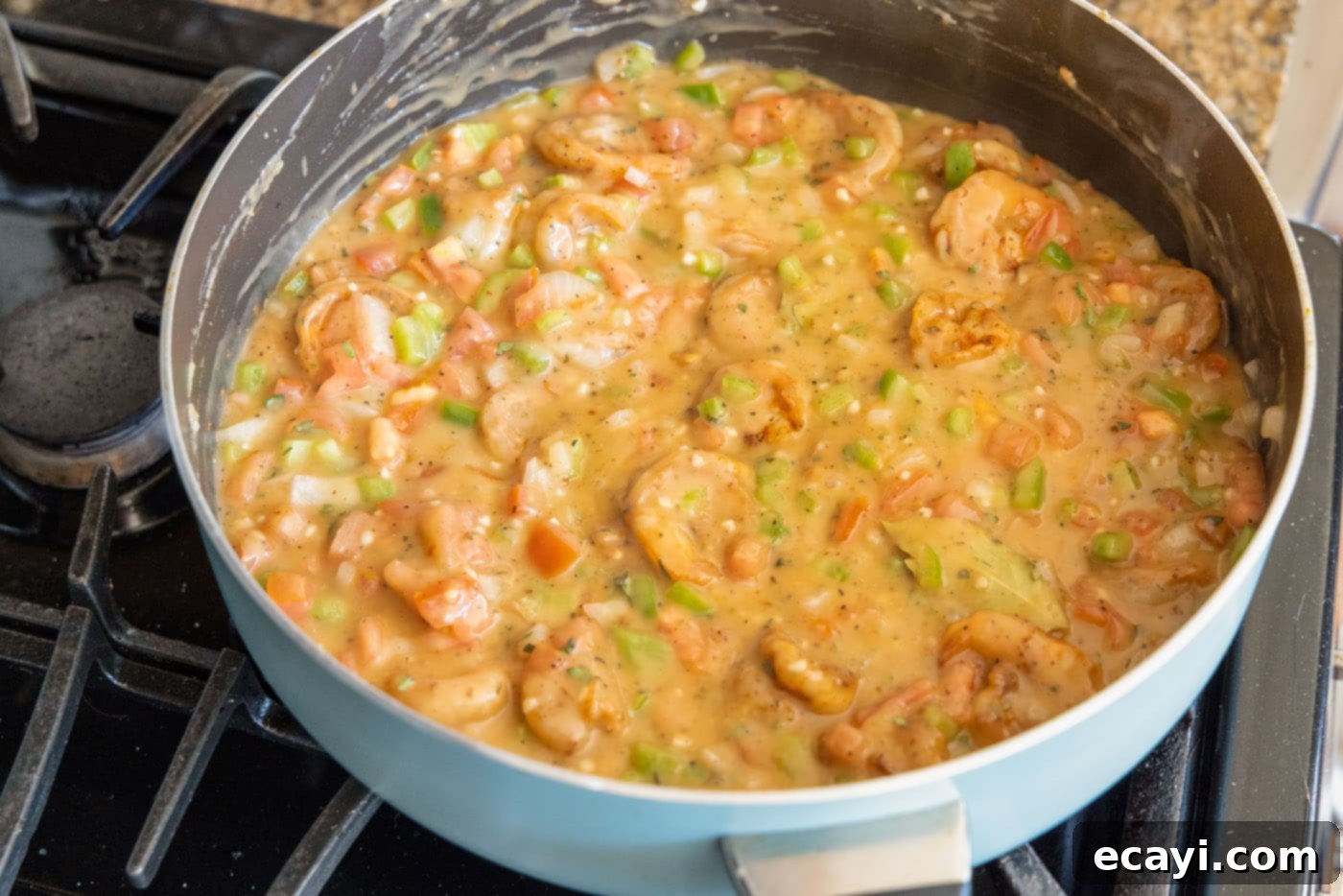Classic Homemade Shrimp Etouffee: Authentic Cajun Flavor Made Easy
Embark on a culinary journey to the heart of Louisiana with this incredible homemade shrimp etouffee recipe. This beloved Cajun stew is a symphony of robust flavors, centered around succulent shrimp “smothered” in a rich, velvety roux-based sauce. It features the iconic “Holy Trinity” of green bell pepper, celery, and onion, perfectly balanced with a vibrant medley of Cajun spices. Every spoonful promises a taste of Southern comfort, making it an irresistible dish that’s surprisingly simple to prepare in a single skillet.
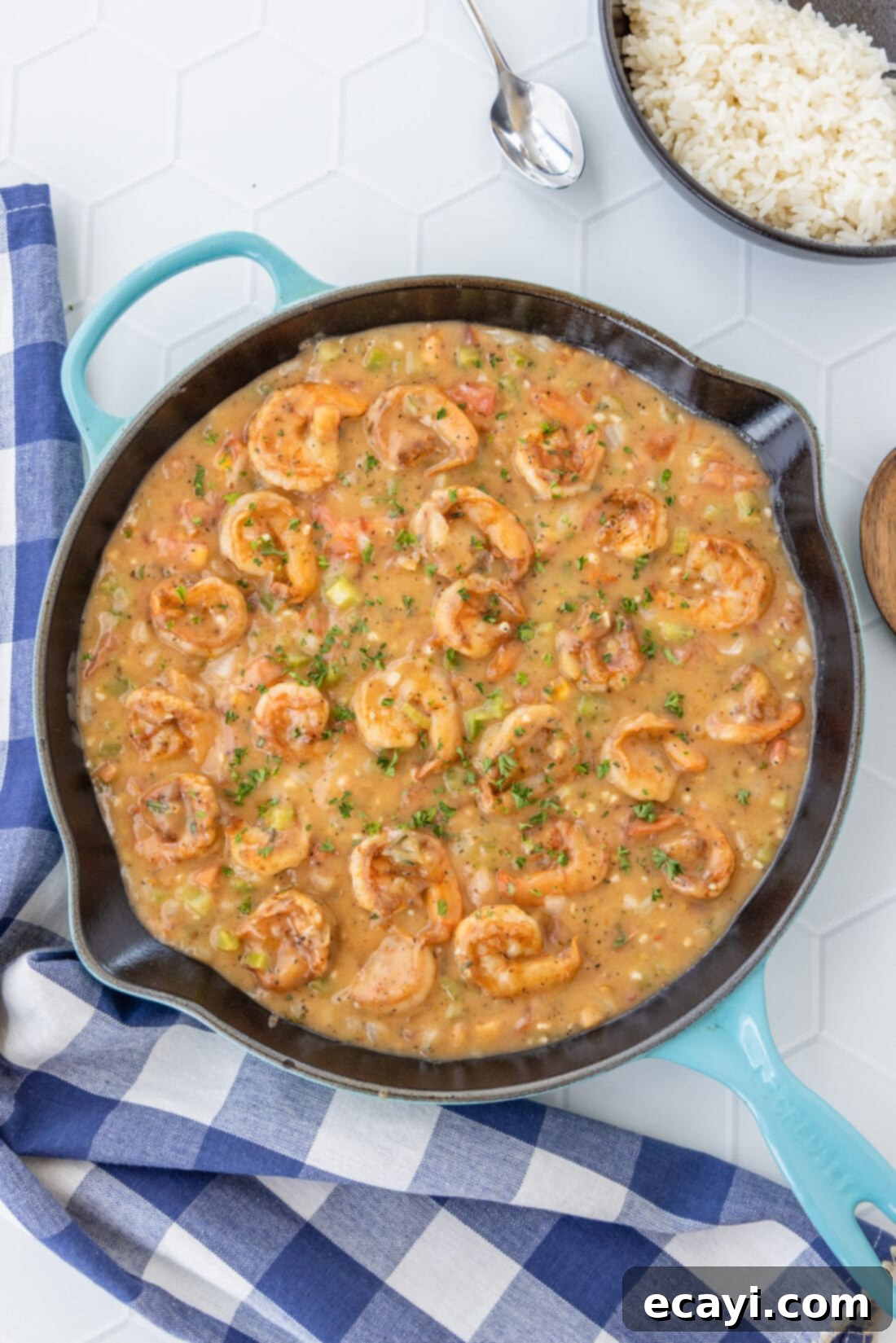
Why This Homemade Shrimp Etouffee Recipe Is a Must-Try
Shrimp etouffee is far more than just a dish; it’s a culinary icon deeply rooted in Louisiana’s rich gastronomic heritage. This recipe stands out because it perfectly captures the authentic essence of this Southern classic, bringing its hearty and deeply flavorful character right to your kitchen. The name “étouffée” itself is French for “smothered,” a technique central to its preparation, where ingredients are cooked slowly in a rich, thick sauce, allowing their flavors to meld beautifully. Our recipe masterfully achieves this by smothering plump, juicy shrimp in a luscious, gravy-like sauce.
What truly sets this etouffee apart is its foundation: a perfectly browned roux and the aromatic “Holy Trinity” of green bell pepper, celery, and onion. This trio isn’t just a collection of vegetables; it’s the indispensable flavor base for countless Cajun and Creole dishes, providing a depth and complexity that defines the cuisine. Combined with the vibrant notes of ripe tomatoes, fragrant bay leaves, earthy thyme, and a hint of tangy Worcestershire sauce, every element works in harmony. These ingredients are carefully chosen to create a stew that is not only incredibly flavorful but also wonderfully balanced and satisfying.
Unlike some complex Cajun dishes, this shrimp etouffee is designed for accessibility without compromising authenticity. It guides you through creating a rich, dark roux – a cornerstone of Cajun cooking – and then layering flavors to achieve that signature taste. The result is a comforting, robust, and utterly delicious meal that transports you straight to the bayou, proving that authentic Southern cuisine can be effortlessly made from scratch in your own home. It’s a testament to the power of simple, fresh ingredients transformed into something extraordinary.
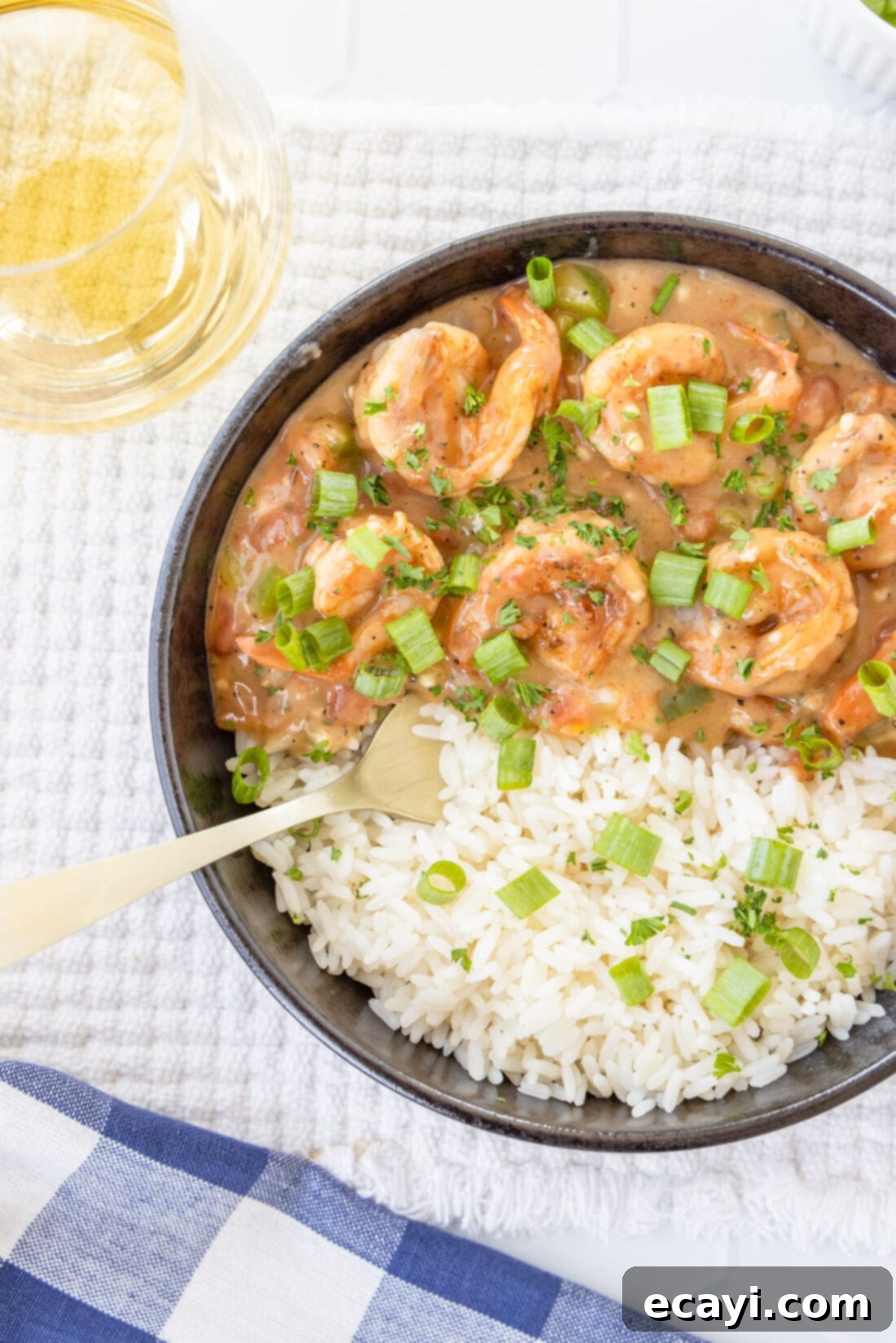
Key Ingredients for Authentic Shrimp Etouffee
Crafting the perfect shrimp etouffee begins with selecting fresh, high-quality ingredients. While the full list with precise measurements is available in the printable recipe card at the end of this post, let’s highlight some essential components that contribute to the dish’s irresistible flavor and texture. Focusing on fresh produce and good quality shrimp will elevate your etouffee from good to truly exceptional. This dish celebrates simplicity in its components, yet achieves profound depth through proper technique and fresh flavors.
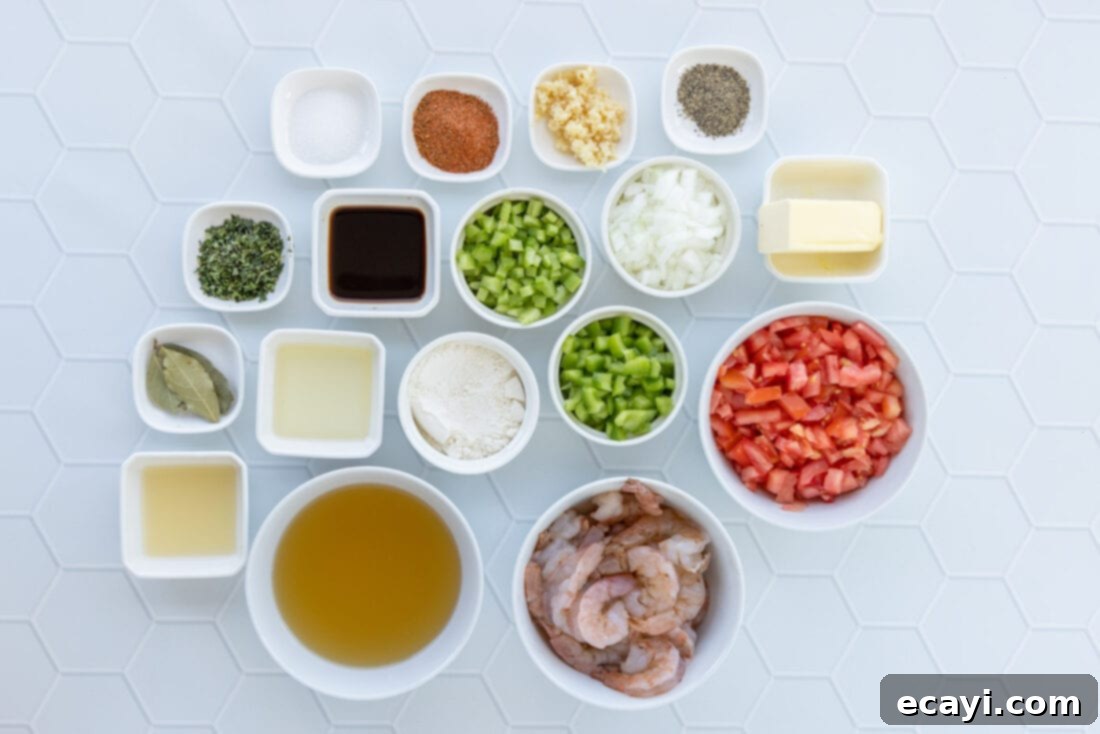
Ingredient Spotlight & Expert Tips
Understanding each ingredient’s role is key to mastering this classic Cajun dish:
- SHRIMP: We strongly recommend using **raw, uncooked shrimp** for this recipe. Raw shrimp absorbs the Cajun seasoning and the rich flavors of the sauce much more effectively, leading to a superior taste and texture. If you must use precooked shrimp due to time constraints, please note that the flavor and texture will not be as robust. Should you opt for precooked, skip the initial sautéing step for the shrimp. Instead, incorporate the Cajun seasoning directly into the sauce along with the other ingredients, and add the precooked shrimp only during the very last step, just long enough to heat them through. This prevents them from becoming rubbery. Always ensure your shrimp are shelled, deveined, and tails removed for ease of eating.
- VEGETABLES – The Holy Trinity: The foundation of almost every classic Cajun and Creole dish, including our etouffee, is the “Holy Trinity” – a vibrant mix of **celery, green bell pepper, and onion**. This aromatic trio provides the essential savory backbone and fresh flavor that defines Louisiana cuisine. The slow cooking of these vegetables allows them to release their sweet and pungent notes, creating a rich base. You’ll find this fundamental combination in other iconic dishes like dirty rice and jambalaya, highlighting its importance in Southern cooking.
- THE ROUX: This is arguably the most crucial element of an authentic etouffee. A roux is a mixture of fat (butter in this case) and flour cooked together to thicken the sauce and add a deep, nutty flavor. For etouffee, you’ll want to cook your roux to a medium-brown or peanut butter color. Patience is key here; stirring continuously over medium heat will prevent burning and ensure a smooth, flavorful base. A well-made roux provides both the characteristic texture and the complex flavor profile.
- CAJUN SEASONING: This blend of spices is vital for the authentic kick and flavor of your etouffee. Adjust the amount to your personal preference for spice. Many store-bought Cajun seasonings are excellent, but you can also make your own blend at home to control the salt and heat.
- LIQUIDS AND FLAVOR ENHANCERS:
- Chicken Stock: Provides the liquid base for our sauce. For an even richer seafood flavor, consider using seafood stock if available.
- Tomatoes: Adds a touch of acidity and sweetness, brightening the overall flavor of the stew. Chopped fresh tomatoes are preferred for their vibrant taste and texture.
- Worcestershire Sauce: A secret weapon for adding umami depth and a subtle tangy note that complements the other flavors beautifully.
- Bay Leaves & Thyme: These herbs infuse the sauce with aromatic complexity as it simmers, contributing to the stew’s classic Southern taste.
- Garlic: Fresh minced garlic provides a pungent, aromatic punch that is indispensable in Cajun cooking.
- Lemon Juice: A squeeze of fresh lemon juice at the end can brighten the entire dish, cutting through the richness and enhancing the seafood flavor.
Step-by-Step Guide: How to Make Shrimp Etouffee
These step-by-step photos and detailed instructions are here to help you visualize how to make this incredibly flavorful shrimp etouffee. For the full printable version of this recipe, complete with precise measurements and comprehensive instructions, you can Jump to Recipe at the bottom of this post.
- **Prepare the Shrimp:** Begin by seasoning your raw, peeled, and deveined shrimp generously with the Cajun seasoning. Ensure each piece is evenly coated, allowing the flavors to penetrate the shrimp before cooking. This initial seasoning is crucial for building flavor from the start.

- **Sear the Shrimp Lightly:** Heat the olive oil in a heavy-bottomed skillet (a Dutch oven or cast iron skillet works wonderfully) over medium heat. Add the seasoned shrimp and sauté for just 1-2 minutes. The goal here is to achieve a slight color on the shrimp and for them to begin turning opaque, but not to cook them through entirely. They will finish cooking later in the sauce, which prevents them from becoming tough. Remove the partially cooked shrimp from the skillet and set them aside.

- **Build the Roux and Sauté the Trinity:** In the same skillet, melt the butter over medium heat until it becomes foamy. Gradually sprinkle in the all-purpose flour, stirring constantly to create a smooth roux. Continue to stir and cook the roux until it reaches a medium-brown color, similar to peanut butter. This process develops a deep, nutty flavor. Once the roux is ready, add the chopped onion, green bell pepper, and celery (the Holy Trinity). Stir them into the roux, ensuring they are well coated, and cook for about 5-7 minutes until the vegetables soften and become aromatic.


- **Develop the Sauce:** Pour in the chicken stock, minced garlic, salt, black pepper, lemon juice, and Worcestershire sauce. Stir everything together thoroughly, making sure there are no lumps from the roux and the sauce starts to thicken. Bring the mixture to a gentle simmer and cook for 2-3 minutes, allowing the flavors to meld. Next, stir in the chopped fresh tomatoes and cook for an additional minute, just enough to incorporate their fresh taste without breaking them down too much.


- **Final Simmer with Shrimp:** Finally, add the bay leaves, fresh thyme, and the reserved partially cooked shrimp back into the skillet. Stir gently to combine all ingredients, ensuring the shrimp are nestled into the rich sauce. Allow the etouffee to simmer for just 2 minutes. This brief simmer is enough to heat the shrimp through completely and allow them to absorb the final flavors of the sauce without overcooking, keeping them tender and succulent. Remove the bay leaves before serving.


Frequently Asked Questions & Expert Tips for Perfect Etouffee
To keep your delicious shrimp etouffee fresh, store any leftovers in an airtight container in the refrigerator for up to 2 days. For longer storage, etouffee freezes remarkably well. Transfer it to a freezer-safe container or bag and freeze for up to 2-3 months. Thaw overnight in the refrigerator before reheating.
The best way to reheat shrimp etouffee is on the stovetop over medium-low heat. Stir it occasionally to ensure even heating and prevent sticking. If the sauce has thickened too much in the fridge, you can add a splash of chicken stock or water to reach your desired consistency. If you’re concerned about overcooking the shrimp, you can gently remove them from the gravy when reheating, warm the gravy through, and then add the shrimp back in during the last minute or two of heating.
While both are iconic Louisiana dishes, the main differences lie in their consistency and technique. Gumbo is typically a soupier, stew-like dish often thickened with filé powder (ground sassafras leaves) or okra, and often contains various meats and seafood. Etouffee, on the other hand, is generally thicker, always built on a rich, blonde to brown roux, and traditionally features a single main ingredient “smothered” in its gravy-like sauce, most commonly shrimp or crawfish.
You can certainly prepare parts of the etouffee in advance! The roux and the base sauce (without the shrimp) can be made a day or two ahead and stored in the refrigerator. When you’re ready to serve, simply reheat the sauce and add the freshly sautéed shrimp to finish the dish. This strategy helps to prevent the shrimp from becoming overcooked if reheated multiple times.
The spice level largely depends on your Cajun seasoning blend. To make it spicier, you can add a pinch of cayenne pepper along with the Cajun seasoning, or a few dashes of your favorite hot sauce at the end. For a milder version, use a mild Cajun seasoning and reduce or omit any extra cayenne. Always taste and adjust as you go!
Expert Tips for a Flawless Etouffee:
- Master Your Roux: The roux is everything. Stir it continuously and be patient. Don’t rush the process, and don’t let it burn. A perfectly cooked roux will give your etouffee a rich flavor and beautiful color. If it smells burnt, start over.
- Don’t Overcook the Shrimp: Shrimp cook very quickly. Overcooked shrimp become tough and rubbery. Sear them lightly at the beginning, then add them back to the simmering sauce for just a couple of minutes to finish. They will continue to cook slightly from the residual heat.
- Fresh is Best: While convenient, pre-chopped vegetables or pre-cooked shrimp won’t deliver the same depth of flavor. Take the extra time to chop fresh vegetables and use raw shrimp for the best results.
- Taste and Adjust: Always taste your sauce before adding the shrimp. Adjust salt, pepper, and Cajun seasoning to your preference. A final squeeze of lemon juice can brighten all the flavors.
- Use a Heavy Skillet: A heavy-bottomed skillet or Dutch oven distributes heat more evenly, which is crucial for making a consistent roux and preventing the sauce from scorching.
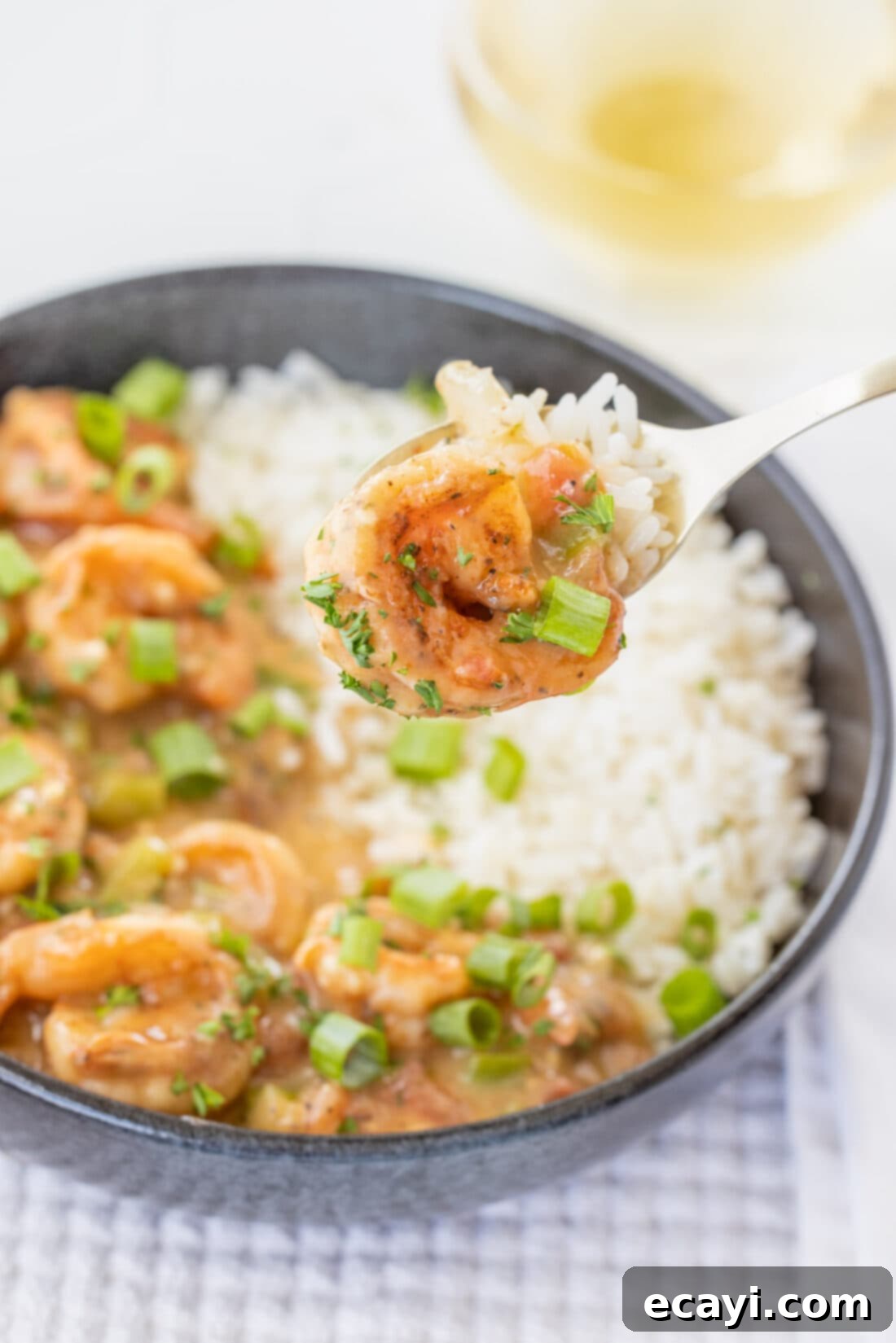
Serving Suggestions for Your Cajun Feast
To fully appreciate the rich flavors of shrimp etouffee, serving it correctly is key. Traditionally, this hearty stew is spooned generously over a bed of fluffy white rice, allowing the rice to soak up every drop of the savory sauce. This combination creates a comforting and complete meal. For an even more authentic Southern experience, pair your etouffee with a side of warm, buttery cornbread – perfect for mopping up any leftover gravy. A simple green salad with a light vinaigrette also makes a wonderful accompaniment, providing a fresh contrast to the rich flavors.
More Delightful Southern & Cajun Recipes
- Jambalaya
- Shrimp Boil
- Shrimp and Grits
- Cajun Chicken Pasta
- Fried Green Tomatoes
I love to bake and cook and share my kitchen experience with all of you! Remembering to come back each day can be tough, that’s why I offer a convenient newsletter every time a new recipe posts. Simply subscribe and start receiving your free daily recipes!

Shrimp Etouffee
IMPORTANT – There are often Frequently Asked Questions within the blog post that you may find helpful. Simply scroll back up to read them!
Print It
Pin It
Rate It
Save ItSaved!
Ingredients
- 1 pound raw medium shrimp shelled, deveined, tails removed
- 1 Tablespoon Cajun seasoning
- 2 Tablespoons olive oil
- ⅓ cup butter
- ⅓ cup all purpose flour
- ½ cup chopped celery
- ½ cup chopped green bell pepper
- ½ cup chopped onion
- 1 cup chicken stock
- 1 Tablespoon minced garlic
- 1 teaspoon salt
- 1 teaspoon black pepper
- 2 Tablespoons lemon juice
- 2 Tablespoons Worcestershire sauce
- 2 medium tomatoes chopped, about 2 cups
- 1 teaspoon fresh thyme leaves
- 2 bay leaves
Things You’ll Need
-
Large heavy bottomed skillet
-
Vinyl gloves
Before You Begin
- We do not recommend using precooked shrimp in this dish as the flavor will not be the same. However, if it’s a must, skip the first step of sautéing the shrimp. Add the Cajun seasoning with the rest of the ingredients and add the precooked shrimp last, just to heat through.
- Store leftovers in an air-tight container kept in the refrigerator for up to 2 days. Etouffee can also be frozen for up to 2-3 months.
- Reheat on the stovetop over medium-low heat, stirring occasionally, until warmed through. You can separate the shrimp from the gravy when reheating if desired, as the gravy will likely take longer to warm up compared to the shrimp, ensuring perfectly cooked shrimp.
- For the best flavor, dedicate time to properly cook your roux to a medium-brown color, stirring constantly to prevent burning. This foundation is essential for an authentic etouffee.
Instructions
-
Season the raw, peeled, and deveined shrimp evenly with the Cajun seasoning.
-
Heat olive oil in a heavy-bottomed skillet over medium heat. Add seasoned shrimp and sauté for 1-2 minutes until they just begin to change color and are no longer opaque. Remove shrimp and set aside.
-
Melt butter in the same skillet until foamy. Whisk in all-purpose flour to create a roux, cooking and stirring continuously until it reaches a medium-brown, peanut butter color. Add chopped onion, green bell pepper, and celery (the Holy Trinity) to the roux. Stir to combine and cook until softened, about 5-7 minutes.
-
Pour in chicken stock, minced garlic, salt, black pepper, lemon juice, and Worcestershire sauce. Stir thoroughly until the sauce thickens and no lumps remain. Simmer for 2-3 minutes. Stir in the chopped fresh tomatoes and cook for one more minute.
-
Add bay leaves, fresh thyme, and the reserved partially cooked shrimp to the skillet. Gently stir to combine. Simmer for just 2 minutes, allowing the shrimp to finish cooking through and absorb the flavors. Remove bay leaves before serving.
Nutrition
The recipes on this blog are tested with a conventional gas oven and gas stovetop. It’s important to note that some ovens, especially as they age, can cook and bake inconsistently. Using an inexpensive oven thermometer can assure you that your oven is truly heating to the proper temperature. If you use a toaster oven or countertop oven, please keep in mind that they may not distribute heat the same as a conventional full sized oven and you may need to adjust your cooking/baking times. In the case of recipes made with a pressure cooker, air fryer, slow cooker, or other appliance, a link to the appliances we use is listed within each respective recipe. For baking recipes where measurements are given by weight, please note that results may not be the same if cups are used instead, and we can’t guarantee success with that method.
